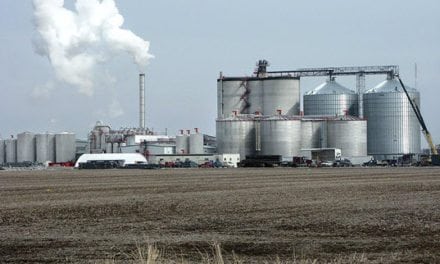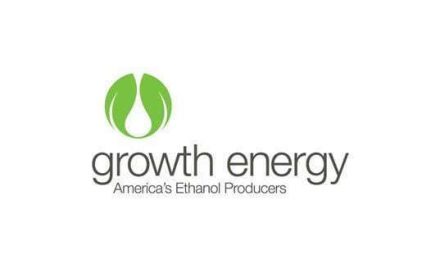Bullish Price Expectations Face Higher Production Reality
- Geopolitical factors develop for Saudi Arabia and Venezuela
- Gasoline crack spreads react to more crude oil and lesser product supply
- Crude oil prices struggle for air; now in carry ( bearish)
- End-of-season natural gas storage second lowest since 2010.

The Matrix
Oil prices pushed higher during the week ending March 16, 2018, but without much enthusiasm. One story, for example, was the report that refinery utilization rose which should have suggested increased product supply. Growing refiner’s demand for crude oil stood in contrast to declining product stocks.
Geopolitical forces are providing bullish anxiety. Change in leadership at the State Department is seen by some as expanding Middle East price uncertainty. The incoming Secretary is seen as more hawkish toward Iran than his predecessor and thus more likely to support pulling away from the Iranian deal now in place. Instability in Venezuela contributes to price uncertainty as well.
The combination of crude oil inventory gains and substantial product supply reductions could be seen in crack spread action. The April gasoline crack spread experienced a weekly range of $2.45, moving from the contract’s recent low $17.50. The weekly high of $19.95 fell short of a downtrend line in force since November, 2017. The gas crack fell back as the week ended.
The April gasoline crack spread began trading in March 2015 at $9.27. For much of its life, the contract traded between $15 and $19.70. It was around the time of last year’s hurricanes that the April crack spread pushed to highs at $25.40 (in November 2017.) Current action shows rallies working hard to reach the downtrend line. Persistent lows are returning the contract to its historical level of support.
If global price expectations reflect geopolitical instability, domestic crude oil production is an expanding reality. Output is now solidly above 10 million barrels daily with eleven million now anticipated. This is now reflected in the shape of crude oil prices. April crude oil futures are slightly cheaper than May contracts (in carry.) This is an important change from recent price differences in which the nearest contract was more expensive than the more distant month (in backwardation.)
Crude oil prices had a significant bottom most recently on March 3, 2016 at $26.05. The subsequent rally brought values to $66.66 on January 31,2018. Prices are now about $4.25 below that top. This leaves plenty of room for a retracement as domestic production adds to supply.
Supply/Demand Balances
Supply/demand data in the United States for the week ending March 9, 2018 were released by the Energy Information Administration.
Total commercial stocks of petroleum fell 4.5 million barrels during the week ending March 9, 2018.
There were draws in stocks of gasoline, K-jet fuel, distillates, and propane. Builds were reported in stocks of fuel ethanol, residual fuel, and other oils.
Commercial crude oil supplies in the United States increased to 430.9 million barrels, a build of 5.0 million barrels.
Crude oil supplies increased in three of the five PAD Districts. PAD District 1 (East Coast) crude oil stocks rose 0.5 million barrels, PADD 3 (Gulf Coast) crude stocks advanced 5.7 million barrels, and PADD 4 (Rockies) stocks advanced 0.9 million barrels. PADD 2 (Midwest) stocks declined 1.5 million barrels and PADD 5 (West Coast) stocks fell 0.7 million barrels.
Cushing, Oklahoma inventories increased 0.3 million barrels from the previous report week to 28.5 million barrels.
Domestic crude oil production increased 12,000 barrels daily to 10.381 million barrels per day from the previous report week.
Crude oil imports averaged 7.585 million barrels per day, a daily decrease of 418,000 barrels. Exports fell 11,000 barrels daily to 1.487 million barrels per day.
Refineries used 90.0 per cent of capacity, an increase of 2.0 percentage points from the previous report week.
Crude oil inputs to refineries increased 432,000 barrels daily; there were 16.367 million barrels per day of crude oil run to facilities. Gross inputs, which include blending stocks, rose 404,000 barrels daily to 16.687 million barrels daily.
Total petroleum product inventories saw a decrease of 9.5 million barrels from the previous report week.
Gasoline stocks decreased 6.3 million barrels from the previous report week; total stocks are 244.8 million barrels.
Demand for gasoline rose 366,000 barrels per day to 9.642 million barrels daily.
Total product demand increased 461,000 barrels daily to 20.931 million barrels per day.
Distillate fuel oil supply fell 4.4 million barrels from the previous report week to 133.1 million barrels. National distillate demand was reported at 3.832 million barrels per day during the report week. This was a weekly decrease of 94,000 barrels daily.
Propane stocks decreased 2.3 million barrels from the previous report week to 38.8 million barrels. Current demand is estimated at 1.548 million barrels per day, a decrease of 74,000 barrels daily from the previous report week.
Natural Gas
According to the Energy Information Administration:
Working gas net withdrawals are 4 Bcf lower than the five-year average. Net withdrawals from storage totaled 93 Bcf for the week ending March 9, compared with the five-year (2013–17) average net withdrawal of 97 Bcf and last year’s net withdrawals of 55 Bcf during the same week. Working gas stocks totaled 1,532 Bcf, which is 296 Bcf lower than the five-year average and 718 Bcf lower than last year at this time.
Working gas levels are on pace to end the 2017— 18 heating season at the second-lowest level since 2010. Working gas stocks have rebounded since falling to 59 Bcf lower than the five-year minimum range and 486 Bcf lower than the five-year average for the Lower 48 states on January 19, 2018. If net withdrawals from working gas stocks match the five-year average for the remainder of the withdrawal season, working gas stocks will total 1,406 Bcf by March 31, 2018, which is 17% lower than the five-year average. Working gas stocks ended the 2013–14 heating season at 837 Bcf, which is the lowest reported level for that time since 2010.
Futures trading involves significant risk and is not suitable for everyone. Transactions in securities futures, commodity and index futures and options on future markets carry a high degree of risk. The amount of initial margin is small relative to the value of the futures contract, meaning that transactions are heavily “leveraged”. A relatively small market movement will have a proportionately larger impact on the funds you have deposited or will have to deposit: this may work against you as well as for you. You may sustain a total loss of initial margin funds and any additional funds deposited with the clearing firm to maintain your position. If the market moves against your position or margin levels are increased, you may be called upon to pay substantial additional funds on short notice to maintain your position. If you fail to comply with a request for additional funds within the time prescribed, your position may be liquidated at a loss and you will be liable for any resulting deficit. Past performance may not be indicative of future results. This is not an offer to invest in any investment program.
Powerhouse is a registered affiliate of Coquest, Inc.
Was this helpful? We’d like your feedback.
Please respond to [email protected]
Copyright © 2018 Powerhouse, All rights reserved










